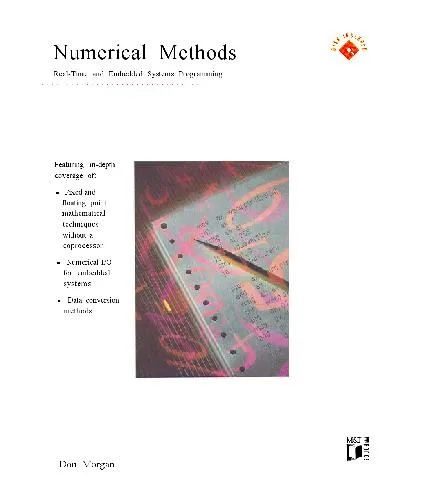Designing Embedded Systems with the SIGNAL Programming Language: Synchronous, Reactive Specification
4.0
Reviews from our users

You Can Ask your questions from this book's AI after Login
Each download or ask from book AI costs 2 points. To earn more free points, please visit the Points Guide Page and complete some valuable actions.Related Refrences:
Introduction
Embedded systems are at the heart of modern technology, found in devices ranging from simple household appliances to critical aerospace systems. Designing these systems requires precision, efficiency, and a methodical approach that ensures both functionality and reliability. "Designing Embedded Systems with the SIGNAL Programming Language: Synchronous, Reactive Specification" is a definitive guide that dives into the details of creating embedded systems using the SIGNAL programming language - a powerful tool for specifying systems with a synchronous and reactive paradigm.
This book serves as a comprehensive resource for software developers, researchers, and engineers who wish to understand and apply SIGNAL for the design of embedded systems. With its ability to handle concurrency, determinism, and reactivity elegantly, SIGNAL enables practitioners to model complex behaviors while ensuring correctness. This introduction explores the essence of the book, key insights, famous quotes, and the significance of this body of work in tackling the growing challenges of embedded system design.
Summary of the Book
The book is meticulously crafted to serve both as an educational resource and a practical reference. Its content spans from foundational concepts to advanced topics, making it accessible to beginners while remaining valuable for experienced professionals. The overarching goal of the book is to familiarize readers with the SIGNAL programming language, while also addressing broader considerations in embedded system design.
The text begins by introducing synchronous programming and its relevance in the domain of embedded systems. It highlights the reactive nature of these systems, which are designed to respond to external stimuli in a predictable and timely manner. The SIGNAL language is presented as a solution for modeling the temporal and behavioral properties required in such systems. The reader is guided through its syntax, semantics, and unique features, including its ability to manage concurrency, handle deterministic synchronization, and specify timing constraints effectively.
Practical examples are interwoven throughout to demonstrate how SIGNAL can be applied to real-world problems, such as safety-critical systems, process control, and communication protocols. The book emphasizes the importance of formal methods in specifying, analyzing, and verifying system behavior, ensuring that designs meet their specifications before implementation. Topics such as system modularity, refinement, and compositional design are explored in depth to illustrate the benefits of structured development practices.
By the end of the book, readers will have a deep understanding of the SIGNAL language, the theoretical principles underlying reactive systems, and the practical tools needed to apply these concepts in their own projects.
Key Takeaways
- A comprehensive introduction to the SIGNAL programming language and its role in designing synchronous, reactive systems.
- A solid understanding of how to design and verify embedded systems using formal methods.
- Insights into handling concurrency, synchronization, and timing constraints in complex systems.
- Practical examples and use cases for applying SIGNAL in real-world contexts.
Famous Quotes from the Book
"In embedded systems, correctness is not a luxury; it is a necessity."
"The SIGNAL language offers not just a way to express computations, but a framework to reason about their interactions in time and space."
Why This Book Matters
As embedded systems grow increasingly complex, the tools and methodologies used to design them must evolve accordingly. This book bridges the gap between theory and practice, empowering practitioners to tackle modern challenges in system design. The SIGNAL language, with its emphasis on reactivity and determinism, provides a superior approach to dealing with the intricacies of embedded systems.
This book matters because it arms readers with the knowledge to design systems that are not only functionally correct but also efficient, maintainable, and reliable. As embedded systems continue to influence industries such as automotive, telecommunications, and healthcare, the principles and practices outlined in this book will remain valuable for years to come.
Whether you're seeking to master the SIGNAL language, explore synchronous programming, or develop cutting-edge embedded systems, this book is an essential addition to your library.
Free Direct Download
You Can Download this book after Login
Accessing books through legal platforms and public libraries not only supports the rights of authors and publishers but also contributes to the sustainability of reading culture. Before downloading, please take a moment to consider these options.
Find this book on other platforms:
WorldCat helps you find books in libraries worldwide.
See ratings, reviews, and discussions on Goodreads.
Find and buy rare or used books on AbeBooks.
1232
بازدید4.0
امتیاز0
نظر98%
رضایتReviews:
4.0
Based on 0 users review
Questions & Answers
Ask questions about this book or help others by answering
No questions yet. Be the first to ask!














